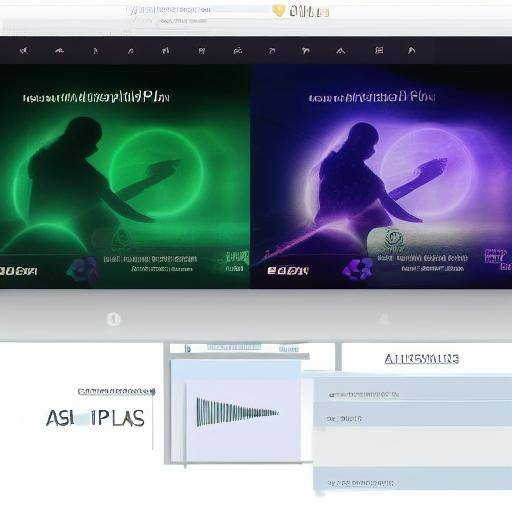
In modern society, working life has become increasingly demanding. Technological advances and globalization have led to a significant increase in labour intensity and speed. In this context, the implementation of scheduled breaks has emerged as an effective strategy to improve the performance and well-being of workers. In this article, we will explore in detail the impact of the pauses programmed in the daily organization, focusing on the well-being and approach of employees.
Introduction: The importance of scheduled breaks in the working environment
The accelerated pace of modern life has led to increased levels of stress and exhaustion in the workplace. The scheduled breaks, understood as regular rest intervals during the working day, have become a crucial resource to counter these negative effects. In implementing strategic pauses, not only can productivity and concentration be improved, but also promotes the overall well-being of employees.
History and Background: The emergence of scheduled breaks
The concept of scheduled breaks has its roots in time management and productivity. Throughout history, different approaches and techniques have emerged to optimize work performance. From the first studies on fatigue and attention to current practices in leading companies, the development of scheduled breaks has been influenced by various factors, including scientific advances, changes in working conditions and innovative approaches to human resources management.
The scheduled breaks have evolved over time, adapting to the changing needs of the workforce. From the pioneers who advocated short and regular breaks to the current studies that support the importance of strategic pauses to improve productivity and well-being, the history of scheduled pauses reflects a path of continuous development and adaptation to the demands of the working environment.
Depth Analysis: Current Benefits, Challenges and Trends
The scheduled breaks offer a number of tangible benefits for employees and organizations as a whole. From the point of view of well-being, these breaks provide the opportunity to rest, recharge energies and reduce stress. In addition, they allow workers to maintain a renewed approach to their tasks, resulting in greater efficiency and quality in the work done.
However, despite its many benefits, the effective implementation of scheduled breaks also presents challenges. For example, some organizations may face cultural or structural resistance to the introduction of regular breaks. In addition, time management and the coordination of pause schedules may require a careful approach to ensure their integration without adversely affecting the business operability.
As for current trends, there is a growing recognition of the importance of the pauses programmed in the working environment. More and more companies are adopting practices that promote regular rest intervals, supported by scientific evidence and studies that demonstrate their positive impact on employee performance and well-being.
Comprehensive Review: Applications, Case Studies and Best Practices
To fully understand the impact of scheduled breaks, it is essential to examine their implementation in different contexts. Case studies and best practices in various industries allow us to appreciate the varied range of approaches and results related to the incorporation of scheduled breaks in the daily organization.
In this regard, it is emphasized that companies that have successfully integrated programmed breaks report significant improvements in labour well-being, productivity and quality of work. These exemplary cases offer valuable lessons for those organizations seeking to effectively implement scheduled breaks. Lessons learned from these experiences provide key information on the steps to be taken, possible obstacles to overcome and expected results.
Comparison Analysis: Programming Guidelines, Labor Welfare and Approach
By comparing the scheduled breaks with the well-being and employee approach, significant interconnections are revealed. Working well-being, which encompasses physical, mental and social aspects of the worker, is enhanced by the implementation of programmed breaks, which allow both physical and mental recovery. Furthermore, greater overall well-being contributes to a greater focus and commitment on work, which in turn has a positive impact on productivity and quality of results.
The employee approach, understood as the ability to maintain attention and commitment to assigned tasks, is strengthened by the introduction of scheduled breaks. These controlled interruptions not only help relieve fatigue and exhaustion, but also promote mental clarity and creativity, fundamental aspects for an effective approach to work.
Practical Tips and Accessible Recommendations
In considering the implementation of scheduled breaks in the working environment, it is crucial to have a number of practical advice and actionable recommendations that guide organizations and employees in the development and effective integration of these practices.
- Establish regular pause schedules: Planning and communicating pause schedules in advance allows employees to structure their working day more effectively, ensuring that they are not interrupted at critical working times.
- Promote active rest activities: Promote active rest activities, such as stretching, short walks or breathing exercises, during breaks contribute to a more complete recovery and increased revitalization to face the following work tasks.
- Implementing enabling environments for rest: Creating calm and welcoming spaces for pauses gives employees the opportunity to disconnect from the working environment and recharge energy effectively.
These practical advices aim to maximize the positive impact of scheduled breaks on work well-being and job performance, offering clear and actionable guidelines for implementation.
Conclusions and FAQs
In short, the impact of the pauses programmed in the daily organization is significant, directly affecting the well-being and approach of employees. Strategic planning and effective implementation of scheduled breaks are a crucial element in optimizing work performance and promoting a healthy and productive working environment.
Frequently asked questions
**What is the ideal duration of a scheduled break?**The ideal duration of a scheduled break may vary, but it is usually recommended intervals of 5 to 15 minutes each 1-2 hours of concentrated work.
**How can an organization overcome the resistance to the implementation of scheduled breaks?**Resistance to the implementation of scheduled breaks can be addressed through effective communication, education about their benefits and the active participation of employees in the design of schedules.
**How do scheduled breaks affect labor productivity?**Although it may seem contradictory, programmed breaks can improve productivity by allowing workers to rest, recharge energy and maintain a renewed focus on their tasks.
**What is the long-term impact of the scheduled breaks on the well-being of work?**In the long term, effective implementation of scheduled breaks can lead to sustained improvement in work well-being, reducing fatigue, stress and exhaustion, and promoting greater commitment and job satisfaction.
**What is the role of leadership in promoting scheduled breaks in the working environment?**Leadership plays a crucial role in promoting scheduled breaks, as it can set a positive example and foster an organizational culture that values the balance between work and rest.
**Are there risks associated with the implementation of scheduled breaks?**While the benefits of scheduled breaks are significant, it is important to effectively manage them to avoid excessive disruption or uncoordination in operations.
Conclusions
The impact of the scheduled breaks on the daily organization is undeniable. From its historical origins to current trends, programmed pauses have proven to be a fundamental tool for improving the well-being and performance of workers. In considering its implementation, it is crucial to understand the benefits, challenges, applications, comparisons and associated practical recommendations.
By closing this comprehensive analysis, it is clear that the scheduled breaks play a crucial role in the current working environment. By promoting a renewed approach, improving well-being and contributing to more effective work performance, these breaks are much more than simple rest periods. They are a valuable tool to foster a healthy and productive working environment.
In short, the consideration and implementation of programmed breaks with a focus on working well-being brings with it significant implications in the daily organization, generating a tangible positive impact both individually and collectively in the working environment.






















































